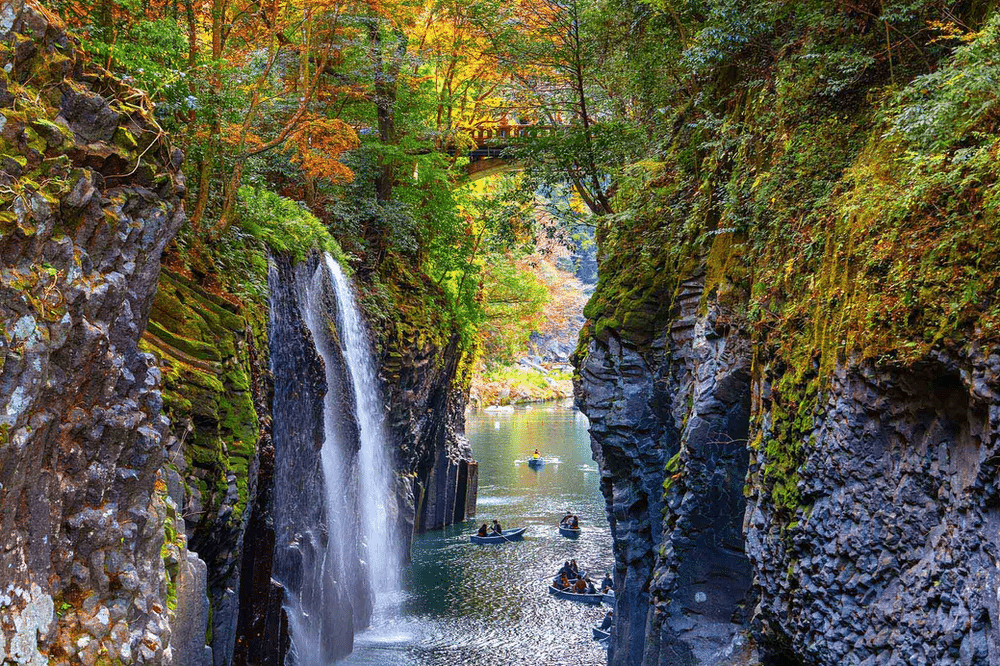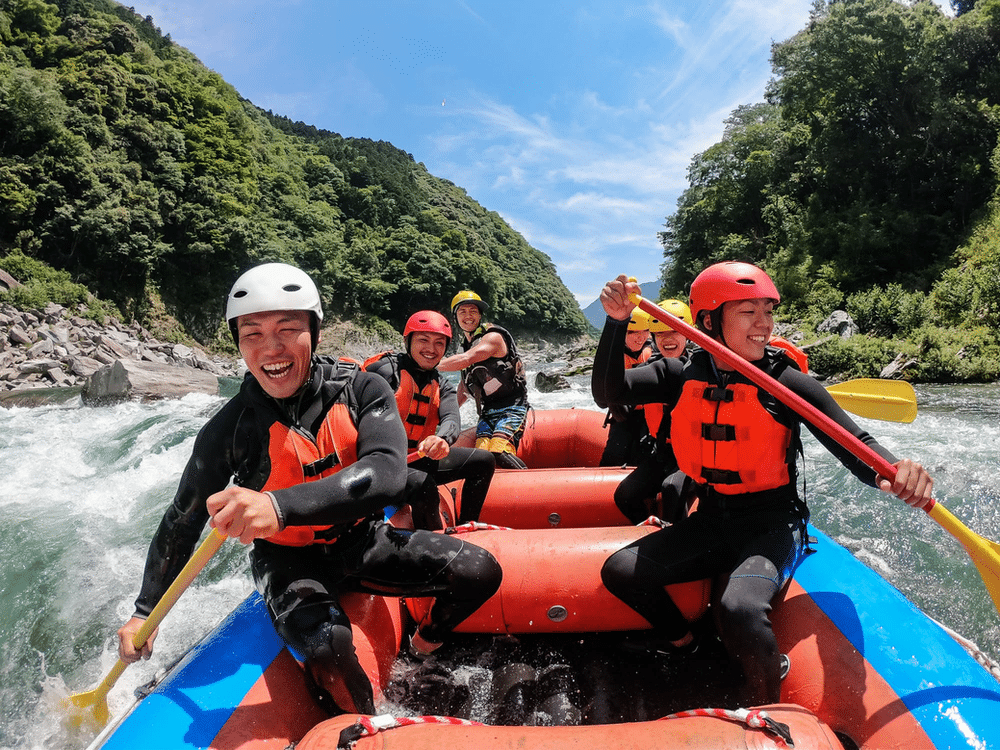
Japan has a rich history of outdoor adventures, and is a leading destination for visitors from around the world.
The nation boasts a reputation for being a low-risk location, being rated one of the safest countries in the world.
Yet leaders in Japan's outdoor and adventure tourism sectors are interested in further improving safety practices in adventure activities across the country.
The development of safety standards for adventure tourism in Japan has been underway for years. An Adventure Travel Guide certification is being established in Hokkaido; outdoor safety leaders in Japan developed a certificated guide program in Azumino, and a certified guide training has been developed in Hakone.
Viristar was invited to speak with government officials in Nagano Prefecture in the northern Japanese Alps, known for its mountain ranges and winter sports, about developing adventure activities safety regulations for the region, to further advance efforts in support of outdoor and adventure risk management.
What are ways that a government might be supported in identifying benefits of a well-regulated adventure sector, and developing a plan to bring those benefits alive?
Viristar plans to share the thoughts below with Japanese government officials in a meeting in Nagano in early December.
These preliminary ideas will be adjusted and expanded as Viristar continues its engagement in supporting and advancing the safety and quality of outdoor adventures in Japan.
First: four case studies of adventure safety regulations around the world.
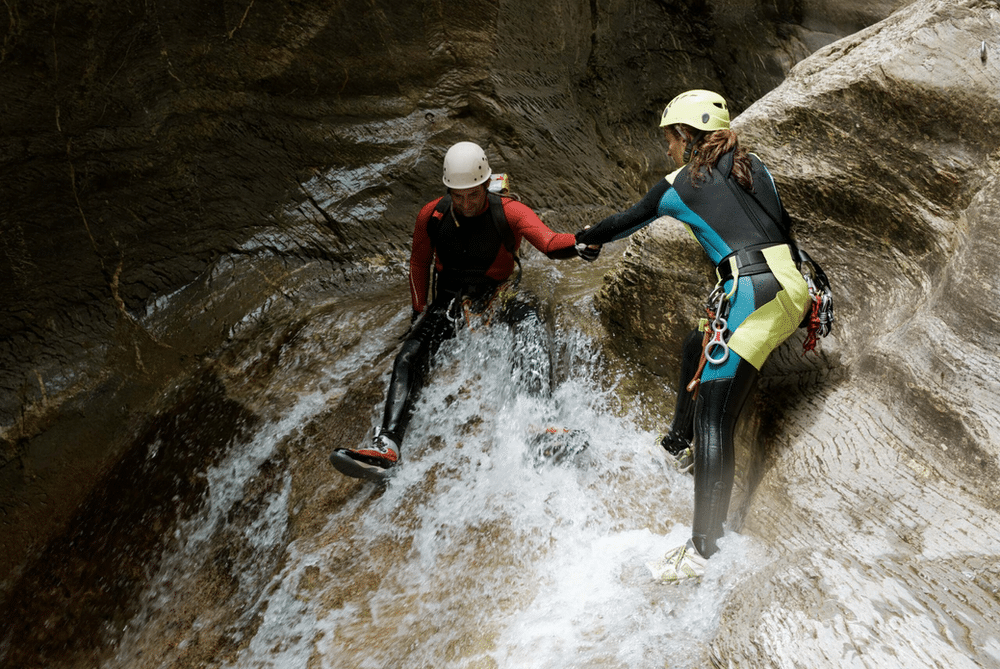
Case Study 1: Switzerland
In Switzerland, in 1999, a group of 45 tourists headed down a canyon for an outdoor adventure. A flash flood descended the canyon. The group had about two seconds’ warning before the water was upon them. Some people were able to escape, but others were trapped between the high walls of Saxetenbach Gorge, and did not survive. Twenty-one persons drowned.
The next year, the same company where that tragedy occurred had another incident. Tourists would bungy-jump off of a gondola that traversed a valley. The operators of the bungy jump mistakenly attached a bungy cord that was too long. A tourist jumped off the gondola attached with the too-long cord, hit the ground next to a parking lot, and died.
There was a public outcry after these tragedies, and calls for the government to regulate adventure activities. But the government wasn’t interested in this—they wanted the private sector to regulate itself.
So adventure organizations came up with a voluntary safety scheme called “Safety in Adventures.” But it wasn’t required. And many companies didn’t use it. So it was seen as not very effective, and it was discontinued.
Finally, the government passed high-risk adventure safety legislation, in 2010.
The law requires a license to provide certain adventure activities, and activity leaders have to have certain qualifications approved by the government.
Adventure businesses must be certified by the government, and they must have a Safety Management System documented and in place.
Companies are subject to annual safety audits, and they must have appropriate liability insurance.

Paddling in Martvili Canyon, Georgia, in eastern Europe
Case Study 2: Georgia (Europe)
In the eastern European nation of Georgia, next to Türkiye and Russia, a couple jumped off a bridge on a rope swing, but the rope snapped, and the couple fell to their death.
Following that, a young woman from India stood up in her raft to take a picture, fell into the water, and drowned.
And last year, two tandem paragliders lost control and crashed into a steep slope.
A helicopter with eight rescuers, including two medical doctors, came to rescue the paragliders, but the tail rotor of the helicopter hit the cliff. The helicopter crashed, exploded into flames, and all eight rescuers died.
The Prime Minister of the country called for a day of mourning.
As a result of these incidents, rope swings, whitewater rafting in some areas, and paragliding are banned in Georgia.
The outdoor adventure sector recognized the need for regulation, and the government agreed to support this. A set of high-risk adventure tourism safety regulations were developed. The proposed regulations are currently working their way through the legislative process.
The regulations require certain adventure providers to have a comprehensive, written Safety Management System describing their risk management plans, and adventure companies must pass a third-party audit before they can be registered and approved to operate.
Activity leaders must be qualified, and the outdoor adventure sector is encouraged to draft detailed Codes of Practice specifying detailed operating procedures for adventure activities.
Viristar was approached to develop these regulations, and Viristar’s director drafted the detailed regulation recommendations to be submitted to the Georgian Parliament for consideration.
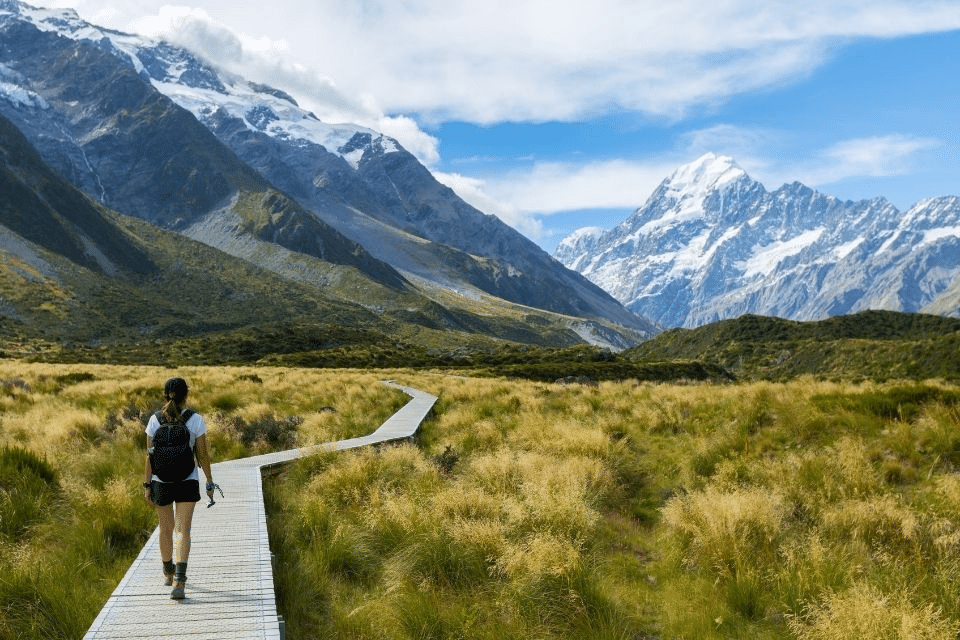
Hiking the Hooker Valley Track in the Aoraki/Mount Cook National Park in New Zealand
Case Study 3: New Zealand
In New Zealand, in 2008, a group of six teenage school children and their teacher drowned on a school trip while hiking down Mangatepopo Gorge.
Just two weeks later, a young British tourist, Emily Jordan, drowned on a riverboarding trip, when she was trapped underwater under a rock for 20 minutes.
The New Zealand government recognized that, like Switzerland and Georgia, adventure tourism is a major part of their economy, and it was important that they have a good reputation globally for safety and quality.
The government passed adventure safety regulations in 2016. The regulations require adventure operators to have a detailed Safety Management System in place. Before they are allowed to operate, adventure providers have to pass a third-party safety audit, covering a wide variety of topics, including:
-
Safety goals are established
-
Safety communications process in place
-
Staff are competent
-
Risks are identified and managed
-
SOPs are in place
-
Participant supervision plan in place
-
Equipment is appropriate
-
Emergency response plan established
-
Staff have first aid training
-
Incident review process in place
-
Procedures for continual improvement implemented
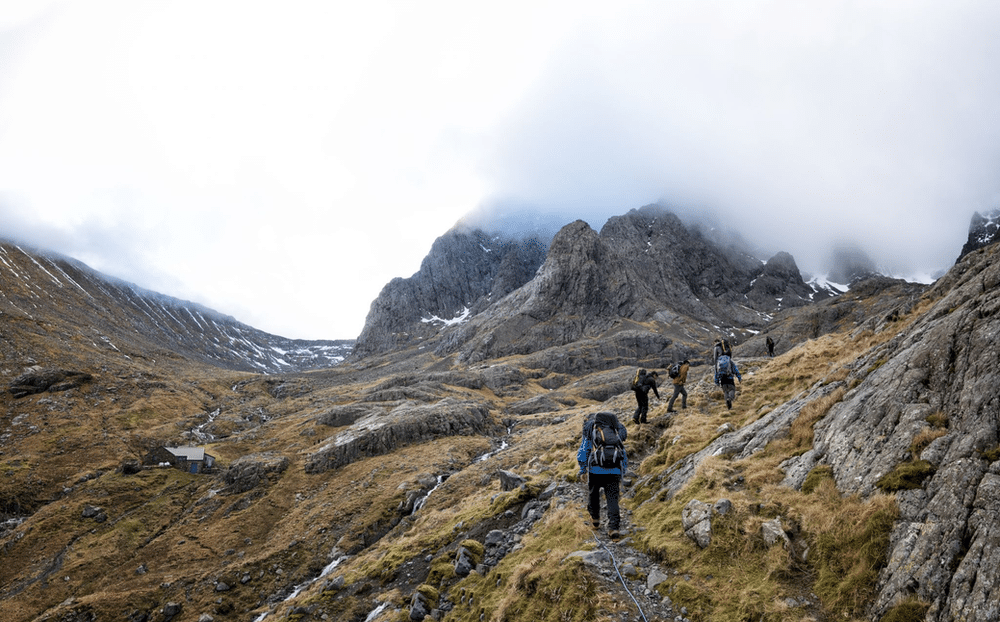
Trekking on Ben Nevis in Scotland, UK
Case Study 4: United Kingdom
In 1993, eight young people and their teacher went on a two-hour guided sea kayak trip in Lyme Bay, in the south of England. The group encountered high winds and large waves, and the boats became separated from each other.
The group did not return to the adventure center after two hours, but the operator failed to call emergency services to request search and rescue. Four young people drowned.
The owner of the activity center went to jail, and the company was shut down.
Three years after the incident, the UK government passed an adventure activities safety law.
The law requires certain adventure providers to have a license before operating. In order to get the license, adventure companies have to pass a third-party safety audit.
Audit criteria cover, among other topics:
-
Safety Management System required
-
Sufficient number of competent instructors
-
Leader-participant ratios
-
Safety communications
-
Equipment management
-
First aid & emergency response
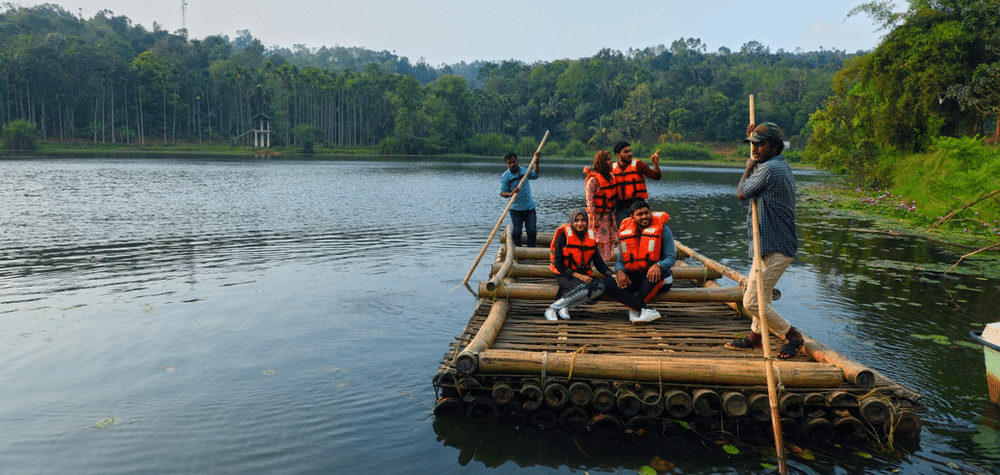
Bamboo rafting at the adventure hub of Karlad Lake in Wayanad district, Kerala state, India
Regulations in Other Regions
There are a number of other locations around the world that have adventure safety requirements. For example, many mountainous countries in Europe, such as France, require mountain guides to have a mountain guiding certification before leading trips.
The Yukon territory in Canada requires wilderness programs to meet certain safety requirements before getting a license to operate.
A couple states in India—Maharashtra and Kerala—have adventure tourism safety regulations.
And other places, such as Finland, have outdoor safety regulations.

Finland, a land of summertime canoe expeditions and winter skiing, with a tradition of outdoor adventure
Why Adventure Safety Regulations?
So why do all these places have laws and regulations around outdoor adventure safety?
Beyond saving lives and preventing harm, a primary reason is that a high-quality adventure tourism sector brings important economic benefits to a country. An adventure tourism sector that’s known for its high quality will attract more tourists and thereby provide revenue and jobs, and can do this in an environmentally sustainable way.
Countries compete globally for adventure tourism dollars. Good safety regulation can have a big influence in positioning Japan, including the Nagano area, as an attractive destination for adventure-seeking tourists.
It’s also the case that well-developed safety regulation benefits the companies that provide adventure activities. In counties like Georgia, China, and India, where there have been fatal accidents in the outdoors, government authorities have suddenly prohibited certain adventure activities, or closed off certain areas for adventure tourism.
This means that adventure guides suddenly lose their jobs, adventure provider companies suddenly go out of business, and the entire adventure tourism sector struggles to grow because of this lack of predictability.
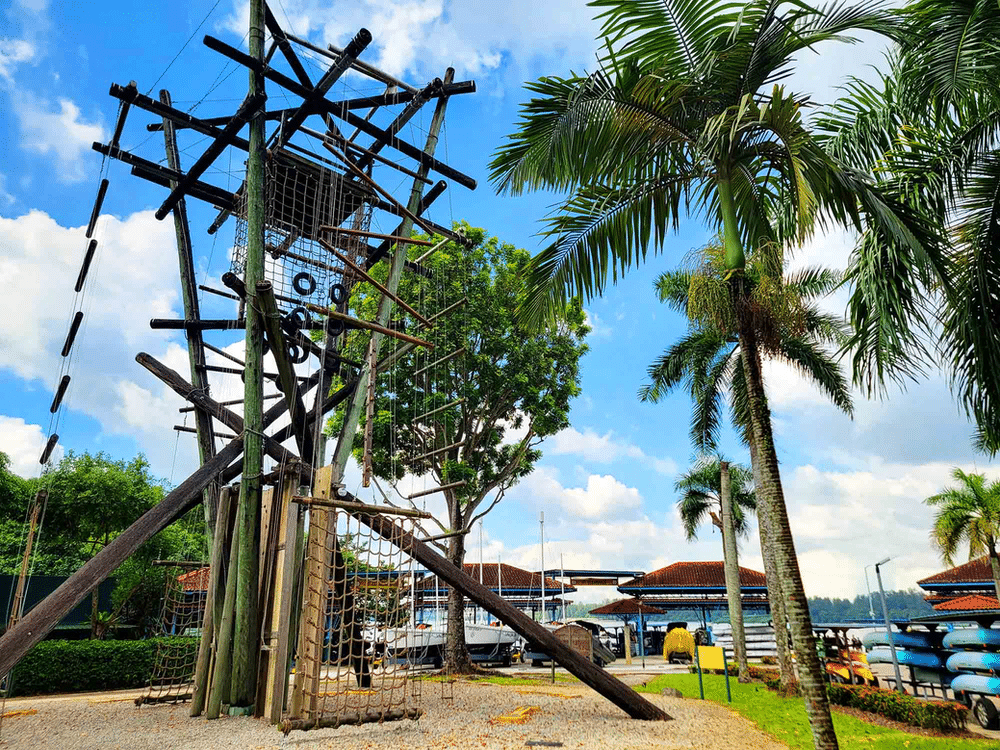
Sea kayaking and ropes course equipment in Singapore, where outdoor adventure is a national priority. Jeff Baierlein/Viristar
This same thing happened a couple of years ago in Singapore, when a young person died on a high ropes course. The government suddenly shut down all high elements activities serving school groups across the entire country, for two years, which had a negative impact on adventure companies.
Another benefit of well-developed outdoor adventure safety regulation is that compulsory requirements help ensure that all companies meet certain standards. This helps prevent some companies from operating in unsafe ways in order to cut costs, which can pressure other companies to do the same, and damage the image and sustainability of the adventure tourism sector.
When outdoor adventure programs are well-managed for safety and quality, the region and entire country can gain a positive reputation in the global outdoor and adventure travel sector. This can help the region attract international meetings and sporting events, and help make Nagano an attractive place for people to live, work and play.
In addition, outdoor businesses can thrive under well-established regulation, as good regulation helps new companies understand what are good practices they are required to meet, which can be confusing or ambiguous for some businesses otherwise.

So, well-established and appropriately enforced regulation can have significant economic and reputational benefits. Let’s look more deeply into the details of how adventure safety regulation can be organized.
Subsectors and Loopholes
Questions that arise are: which activities should be regulated, and which types of outdoor adventure providers should be regulated?
Every country and region has a slightly different approach to this, and there is no one best answer that works for everyone.
However, it’s common that higher-risk activities get subject to regulation, where lower-risk activities are exempted.
Higher-risk activities include things like alpine mountaineering, ski guiding, rock climbing, whitewater paddling, paragliding, bungy jumping, and ropes courses and ziplines.
Lower-risk activities include things like shinrin-yoku (森林浴, forest bathing) and flatwater canoeing.
Most outdoor adventure safety regulations around the world have loopholes for certain providers. Schools and other government entities providing outdoor adventures are often exempted, and non-commercial organizations like outdoor activity clubs are often exempted as well.

The Kumano Kodō (熊野古道) ancient pilgrimage and hiking route on the Kii Peninsula, south of Osaka
Self-Regulation
We can divide regulation into two types: self-regulation by the industry, for which conformance is voluntary, and compulsory regulation by government.
Individuals can regulate themselves by seeking training and certification before they lead certain activities.
Outdoor companies can regulate themselves by requiring their operations to conform to certain safety practices like hiring qualified activity leaders, or having emergency plans, and ensuring staff are well-trained.
And industry associations can support self-regulation by establishing certification systems for individual activity leaders, and accreditation systems for companies that provide outdoor adventures.
However, government regulation is seen as more effective than these measures, as we saw in the case of outdoor safety standards in Switzerland. This is because when good safety practices are voluntary, many will not conform to them, because it costs money.
However, there is an important role for outdoor and adventure associations to play in supporting good safety outcomes.
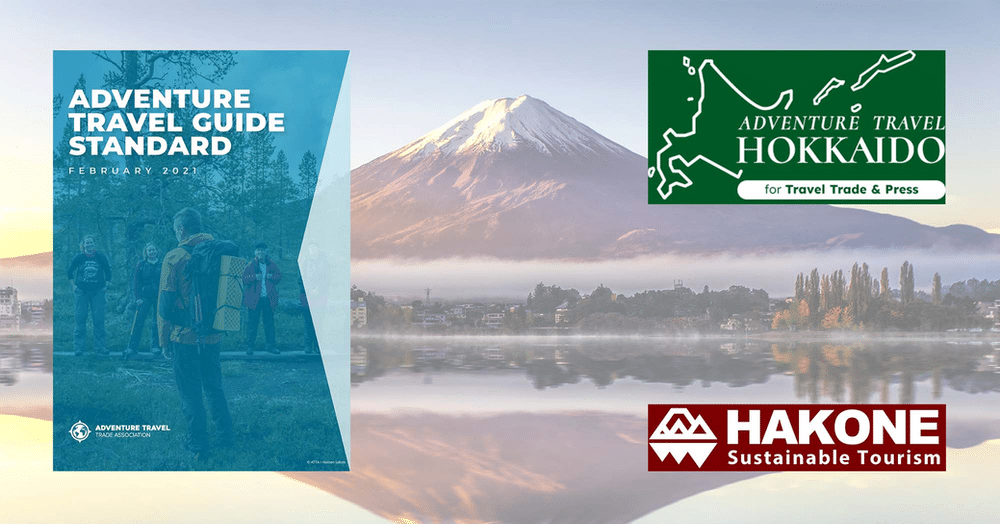
One of the things that government regulation can do is require activity leaders to be qualified.
Industry associations have an important role to play in making this possible.
For example, the Adventure Travel Trade Association has established standards for adventure travel guides.
The standards state that adventure travel guides shall, for instance:
-
Possess appropriate first aid and wilderness medicine training and certification based upon international protocol
-
Be aware of best practice to ensure the safety of all participants during adventure activities
-
Be trained in and follow a safety and risk management system
In Japan, these standards have been adopted by the Hokkaido Adventure Travel Guide certification system, the Azumino certified guide program, and in Hakone.
In the best outdoor safety regulatory regimes, there is a partnership between government and industry.
The government requires things like qualified activity leaders, and for safety management systems to be in place. Then the private sector, through outdoor and adventure associations, fills in with certification systems and templates and detailed guidance to help outdoor adventure companies meet the regulatory requirements.
We’ll explore this in greater detail, below, in a discussion about Codes of Practice.
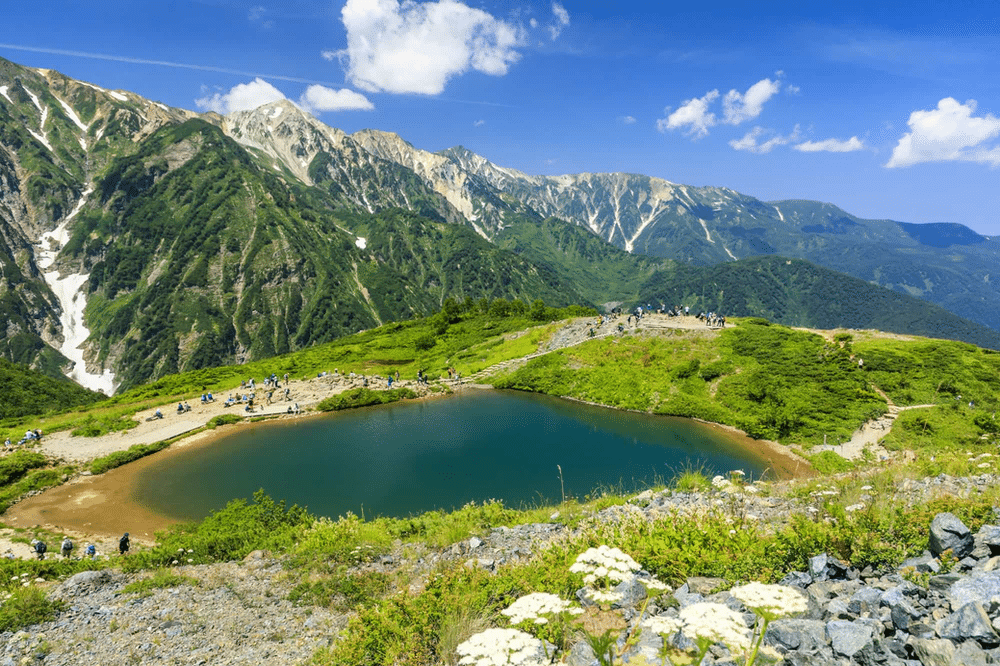
Happo-ike (Happo Pond), near Hakuba, Nagano Prefecture
Government Regulation
Government regulation is essential, since if industry is left to self-regulate on its own, many companies will choose not to meet voluntary safety standards.
So regulation is really important to support the development of the outdoor adventure sector.
However, it’s essential that regulations are developed in close collaboration with the industry, and that they are well-enforced.
Otherwise, outdoor providers are likely to resist conforming to the regulations, and they are more likely to be ineffective.
Another aspect of outdoor adventure safety regulation worth mentioning is that regulation should be normally aimed at outdoor adventure companies, or “providers,” rather than being focused on regulating the qualifications or behavior of individual activity leaders.
This is because the actions of companies, such as establishing good safety policies and emergency plans, have an important role to play in supporting good safety outcomes.
Companies that provide outdoor adventure activities should be required to have a sufficient number of qualified and competent staff.
In Europe, some governments license mountain guides. But most of the outdoor adventure safety regulation that exists focuses on regulating companies, which in turn are responsible for ensuring their employees are appropriately qualified, and this is a good approach to be considered in Nagano and throughout Japan.
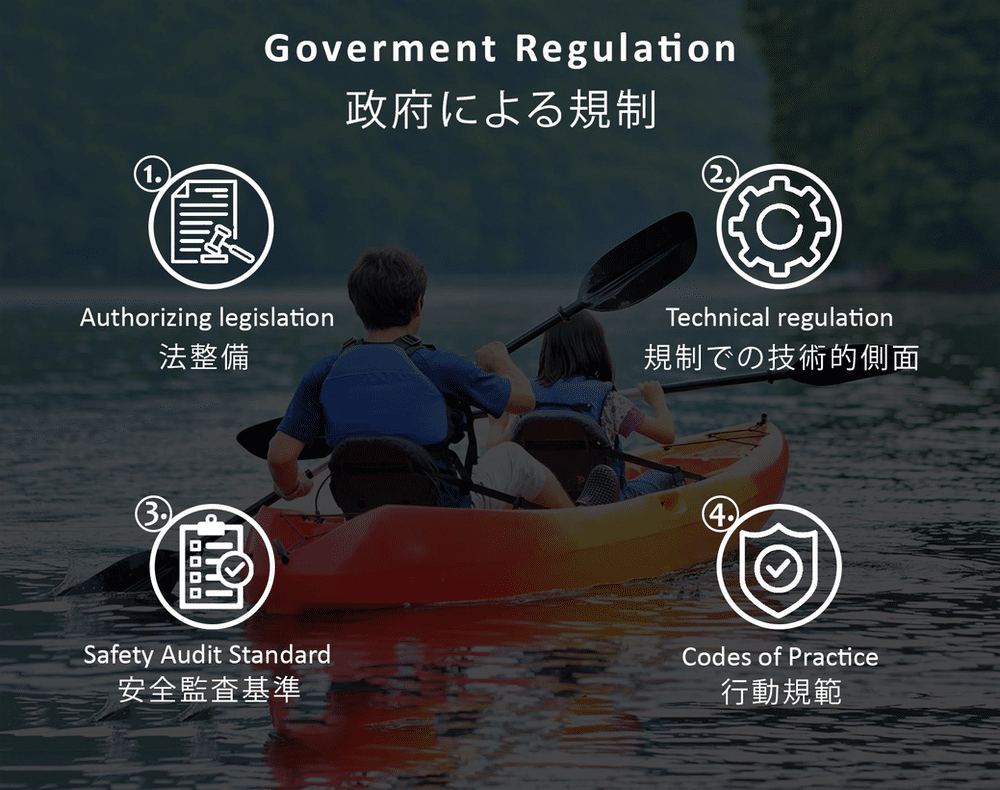
Four Elements of Government Regulation
Let’s take a deeper look into four components of a government regulatory system for outdoor adventure. These four elements are:
-
Legislation that authorizes the government to regulate outdoor adventure activities;
-
Technical regulation that describes in detail the requirements adventure companies must meet, such as having qualified staff, necessary equipment, and a written safety management system;
-
A Safety Audit Standard, which gives companies and the auditors who review those companies detailed guidance on how to meet the requirements of the regulations, and
-
Codes of Practice, which include detailed procedures for safety management, and which are written and maintained by the private sector.
We’ll look at each of these four components in detail.

Law regarding adventure safety in New Zealand, Switzerland and the UK
Component 1: Authorizing Legislation
The government must have authority to regulate the outdoor adventure sector. Usually this authority already exists, in health and safety legislation.
But if it does not, a law must be passed allowing the government to establish and enforce safety regulations for the outdoor adventure sector.

Regulation regarding adventure safety in New Zealand, Switzerland and the UK
Component 2: Technical Regulation
The next piece is the specific regulations. These regulations will typically identify the regulatory agency within the government responsible for managing the regulatory system. This is typically the occupational health and safety agency of the government.
The regulations will also specify the administrative processes in the adventure activities regulatory system. These processes include things like how companies submit their registration, the conditions under which their registration can be revoked, appeal processes, and the like.
And, the regulations can establish an auditing system to ensure that adventure companies are meeting the requirements of the regulations.
This might include saying something like the workplace safety and health agency will identify and manage third-party companies who will perform the safety audits of adventure providers. In the Japanese context, it might require those third-party auditing companies to be accredited by the Japan Accreditation Board as an accredited inspection body.
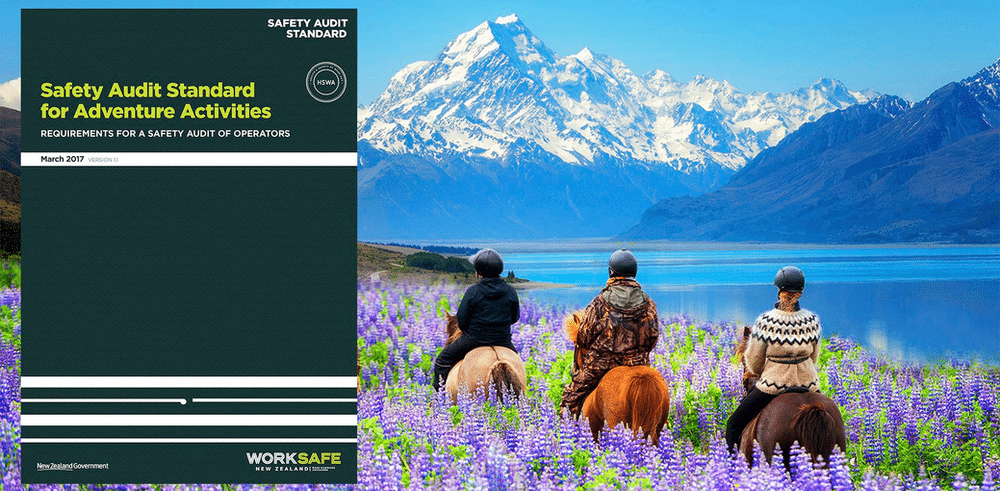
Component 3: Safety Audit Standard
The Safety Audit Standard is a component of the adventure activities regulatory system in New Zealand, and it’s a tool that helps providers and safety auditors understand the specific requirements that need to be met for a prospective adventure provider to pass the safety audit and be approved by the government to offer adventure activities.
The Standard lists requirements like having a written Safety Management System, having qualified staff, managing equipment appropriately, having an incident reporting system, having a plan for managing emergencies, and engaging in a continuous improvement process.
This helps adventure providers understand exactly what is required of them, and in effect helps interpret the regulations for them, in easy-to-understand language.

Codes of Practice from the UK, Australia and New Zealand.
Component 4: Codes of Practice
The last of the four components of an adventure activities regulatory system is Codes of Practice.
Codes of Practice are detailed documents that describe the specific operating procedures organizations should follow.
These procedures, for example, could specify specific client-to-guide ratios, specific safety equipment that must be present (like throwbags on a white water rafting trip), specific practices like requiring helmets on technical canyoning trips, and so on.
It’s not required that adventure providers meet the specifications in the Code of Practice that applies to their activity, but it’s recommended.
These documents are established by the outdoor adventure sector, not by government. Outdoor industry associations are typically responsible for bringing together industry stakeholders and developing these documents.
Government can support this process by providing financial and logistical support to the private sector to help with the development of these documents.
And if the government formally approves the Code of Practice, it can be designated an Approved Code of Practice.
In some locations, such as the UK, following an Approved Code of Practice brings with it legal protections.
If there is a safety incident, but the company where the incident occurred followed the standards in the Approved Code of Practice (ACOP), then that company cannot be found negligent with regards to the activities covered in the ACOP.
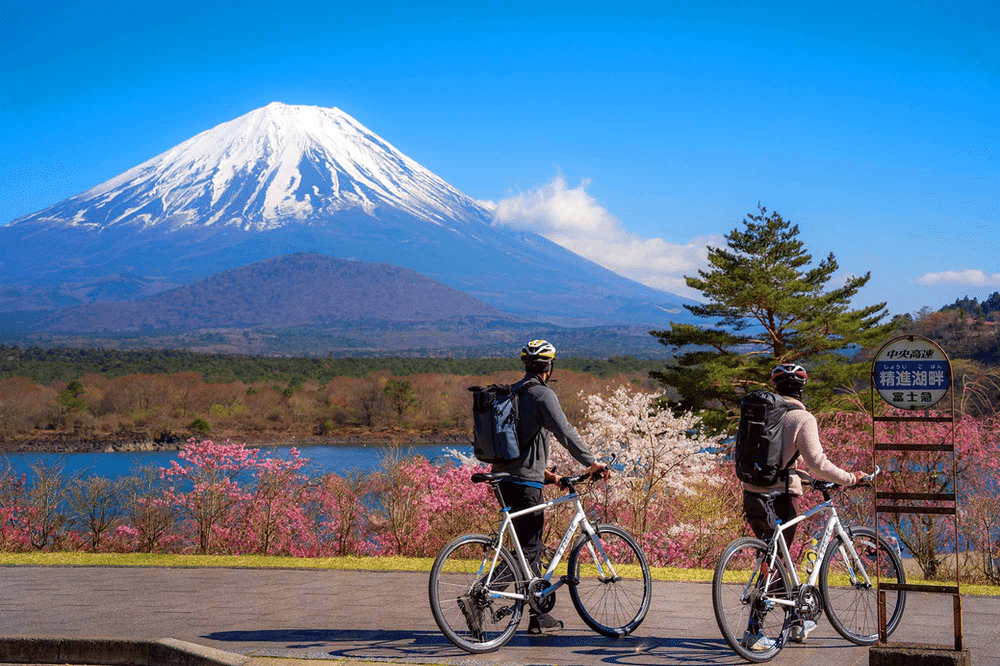
Mount Fuji in the spring, Lake Shōji, Fujikawaguchiko, Yamanashi Prefecture
When Is the Right Time for Regulation?
Some governments are reluctant to regulate the private sector, unless there’s clearly a threat to the economy, or some other urgent reason to create regulations.
However, one clear indication that it may be a good time to introduce safety regulation in a certain sector is when that sector approaches the government and requests to be regulated.
We see that at this time in Japan.
It can also be an indication that regulation is appropriate when other regions are establishing regulation that can boost the outdoor adventure sector, and your area is at risk of falling behind.
For example, China is seeking to develop its outdoor and adventure tourism sector, and establish global leadership or dominance of this sector.
And finally, more and more regions around the world—from China to India and Thailand—are in the process of establishing adventure safety regulations. Government bodies that are serious about having a robust outdoor adventure sector can see regulation of the sector as a normal and expected part of their role in supporting the growth and development of their region.
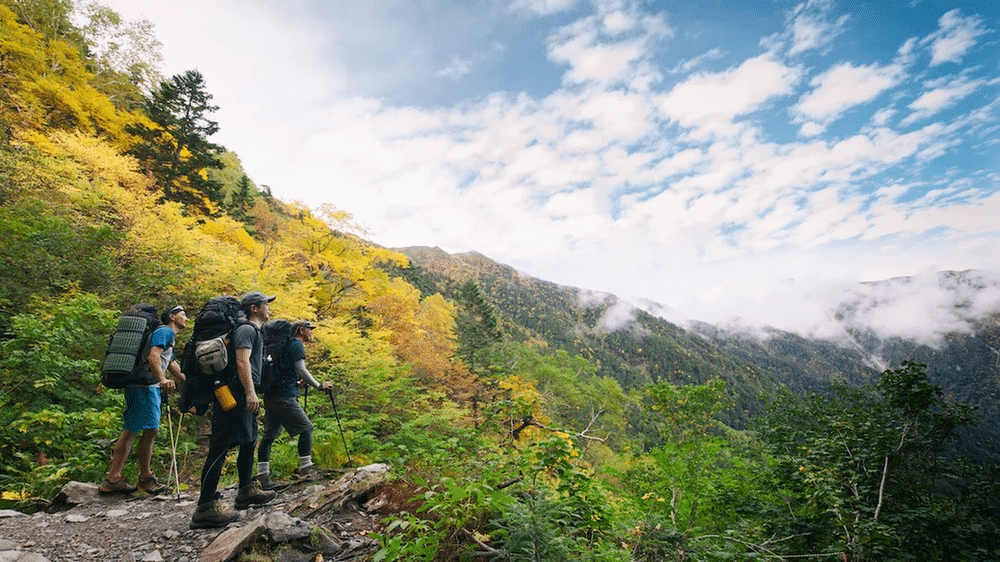
Hiking outside Azumino city, Nagano Prefecture
Adventure Safety Regulation: Perception and Reality
So that’s a little about the theory and practice of outdoor adventure regulation.
Let’s now take a look at how regions around the world have responded to outdoor adventure regulations when they have been put into place.
The research that Viristar has conducted with outdoor programs across Asia and around the world, in approximately 60 countries, shows clearly that most outdoor programs surveyed wish for there to be outdoor safety regulations in place.
Regulations are seen as providing clear guidance on what safety practices are important to follow, and helping ensure that competitors don’t engage in unsafe practices in order to cut costs.
However, there is real concern that the regulation must be well-developed, and that industry must have input into its establishment.

New Zealand, Switzerland and the UK have all established national-level regulation for adventure activities.
In general, companies providing adventure activities in these countries see the regulations as beneficial, and are in support of them.
In the UK, which currently has a Conservative government with a relatively anti-regulatory approach, there is some effort to dismantle the long-standing adventure activities law there.
However, in most regions where adventure regulations are in place, the private sector welcomes and appreciates them.

Japan’s Travel and Adventure Tourism Context
Let’s look at Japan and how it is perceived in terms of being an attractive adventure tourism destination.
Japan is ranked number one by the World Economic Forum as a tourism destination, out of 117 nations surveyed. This is really great, and a really impressive result.
The survey has to do with all kinds of tourism, including cultural tourism, gastronomy, and so on.
With respect to adventure tourism specifically, as measured by the Adventure Tourism Development Index, Japan is in the top 20, which is good. However, other countries, such as Iceland, Switzerland, and New Zealand are seen to have a more well-developed adventure tourism infrastructure.
It’s worth noting that many of the top countries—Switzerland, New Zealand, Germany and Finland—all have outdoor adventure safety regulation for one or more activities or sectors in place.
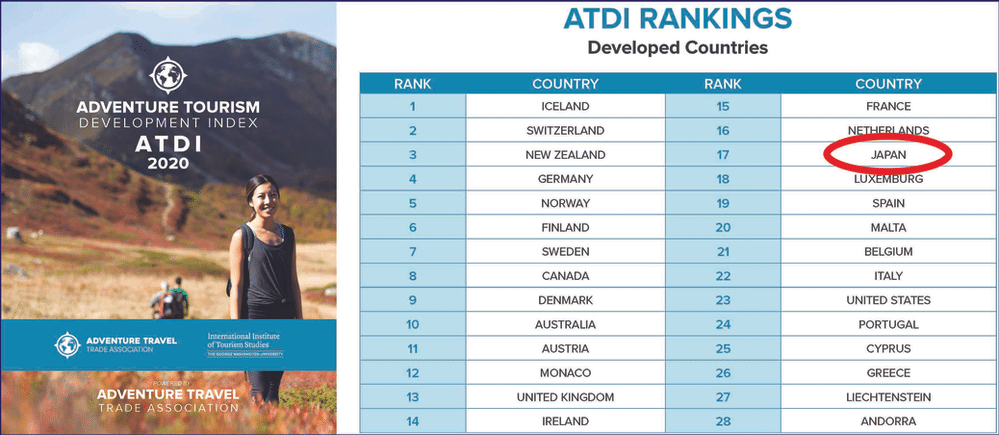
Closing Considerations
We’ll end with some final considerations about regulation of adventure activities.
Creating regulations is easy, but creating good regulations is hard. It takes a high-functioning government, an openness to listen to the private sector, a good amount of time and money and political will, and a willingness to compromise.
And then once the regulation is in place, it takes more time and money to implement the regulations, enforce them, and engage in a process of continual improvement of the regulations.
A high-functioning government, with well-developed governance structures, is required for this to be successful.
It appears at this time that Nagano and Japan have the governance characteristics necessary to successfully support the outdoor adventure sector by the establishment of high-quality adventure safety regulations.
More and more regions around the world are enacting outdoor adventure safety regulations. As the economic, social, wellness and other benefits of outdoor activities become more clear to governments everywhere, and as the benefits of providing common-sense safety requirements for adventure activities become more clear, we can see that adventure safety regulation is anticipated to become more and more normal and expected around the world.
Indeed, we can see that good safety regulation, inclusively developed and appropriately enforced, is the future of high-quality outdoor adventure.
